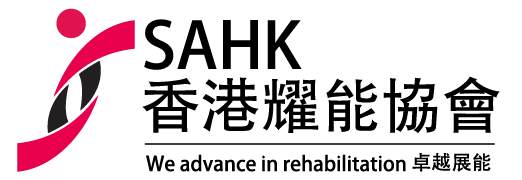Conductive Education
Quality Service, Total Quality Management & Conductive Education
In recent years, with the rise in the general standard of education and an increase in the consciousnesss of consumer's rights, notions like "customer orientation", "service pledge", "service quality standards", and "total quality management" etc. have become topics of intense interest and research. Coupled with the influence from the competitive spirit of the commercial sector - by the incessant quest for product superiority and improved results - these notions have spread into the management philosophy of governmental and non-governmental organizations alike.
Ever since the establishment of the Association, quality service has been our prime target. We remain committed to the improvement of our services in respect of quantity, quality and kind. In terms of our "hardware", we have managed to set up an interconnected and interlocking system of facilities, tailor-made to suit the developmental needs of our clients. In terms of our "software" -service management and programme development - we have devoted no less energy and effort. From the introduction, adaptation and promotion of "Conductive Education", to its systematic theoretical and practical developmental work in the past 2 years, all bear testimony to the Association's commitment to the provision of a quality service.
Perhaps it might be asked: "How do quality service and conductive education fit into each other?" "Would conductive education and total quality management complement or exclude each other?" Facing these questions, I would like to make the following brief observations.
Simply stated, quality service is a notion, an ideal that any service provider must bear in mind as a goal. In order to provide an objective evaluation for the quality of a service, it is necessary to come up with a number of relevant standards or performance indicators. Such performance indicators, in turn, can be classified as "input standards/indicators", "process standards/indicators", and "outcome standards/indictors". The performance indicators of a service include not only its work and direction; but also encompass the organization's commitment(s), mission(s) and value(s). To take a few examples: To have the requisite social work experience in order to qualify as the manager of a workshop (input standard/indicator) illustrates the fact that our workshops are service rather than productivity oriented. To have an individual education programme for every child in our pre-school centre (process standard/indicator) illustrates the client-based commitment of our preschool service. To enable our school pupils to reach their goal of independence and self-reliance, within their given physical and mental limitation(s), as a benchmark of our service effectiveness (outcome standard/indicator), illustrates our holistic goal in education. Therefore, we do not feel distressed, should our workshops suffer a decrease in revenue. Likewise we would not rush into declaring a total success should some individual students manage to proceed successfully beyond their 9 years of basic education and be accepted into a senior secondary programme. This is what is meant by the claim that performance indicators rest on the commitment(s), mission(s) and value(s) of an organization.
Conductive Education rests on the philosophical commitment/belief of the "unity of the body and mind". It interprets the difficulties encountered by the handicaps as a learning problem. The road from dysfunction to orthofunction is accomplished through measures designed to elicit the intention/desire to learn. The ultimate goal is the establishment of an organic and healthy personality. So, in addition to breathing life into the commitment(s), mission(s) and value(s) of the Association, it also shapes the performance indicators of our services directly. Summing up the literature on the subject of total quality management, it can be defined as "a unity, achieved by the collective culture of an organization, under the leadership of the management, dedicated towards the continuous improvement of its product(s)/service(s) in the interest of its customers and to their satisfaction." In other words, it is the achievement of quality service through improvement in management technique.
To put it simply, total quality management can be summarized as the sum of the following elements: (a) superior leadership; (b) continuous innovation and improvement; (c) total involvement/dedication and (d) customer-centreed service.
Conductive education provides us with a working approach; indeed part of it meshes perfectly with the elements of total quality management stated above. Modern leadership theories no longer put the emphasis on personal traits and leadership style; instead the focus is on the team operation and decision making methodology at the organizational level. The transdiciplinary teamwork approach of conductive education gives the necessary superior leadership. Not only does the transdiciplinary team assess regularly the needs and progress of the clients in order to continuously improve their learning programmes; it also organizes group-training exercises in order to elicit the inner intention/desire to learn from the clients, and to cultivate in them the spirit of innovation and self-improvement. The integration of training with their daily living brings training right into the homes of our clients and demands parental participation, thus making total involvement/dedication a reality. To place the clients' needs as the focus of conductive education is exactly what customer centreed service is all about.
To sum up, quality service always remains our goal. Like total quality management, conductive education is an approach by which we move towards the provision of a quality service. At the same time, conductive education also serves as a benchmark for the calibration of the performance indicators. As a commitment, it provides a focus for all staff and help to unify their collective effort. Finally, by providing us with a clear and unambiguous product image and content, it creates a channel by which our clients and their families (and thus, our customers) can identify with us. Indeed, this identification also helps to convey a better understanding of our work on the part of our funding bodies and the supporting general public, thus enabling them to be in position to hold us accountable for our work. Conductive education is a movement of continuous improvement in our service; its implementation is our step towards the goal of the provision of a quality service.






